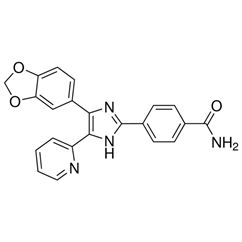OptiCol™ Human Collagen Type IV (lyophilized), 5 mg
Description
OptiCol™ Human Collagen Type IV is the primary collagen found in the extracellular basement membranes separating a variety of epithelial and endothelial cells. It is a major component of the dermal-epidermal junction where it is mostly found in the lamina densa. It is a heterotrimeric molecule containing two α1-like and one α2-like chains. This Type IV collagen is isolated from human placenta and is purified using a multi-step process.
Applications
Tissue engineering research | Wound healing constructs | Coatings | Solid free-form fabrications | Electrospinning | in-vitro research | Nerve Repair, Hemostats, Sealants, Coils, Sponges, Spheres/Beads, Ligaments, Strings, Tubes/Cylinders, Films
Note: Lyophlilized form is not recommended for formation of a 3D gel
| Product Details | |
|---|---|
| Source | Human Placenta |
| Physical Appearance | Lyophilized powder |
| Endotoxin Level | ≤1.00 EU/ml as measured by kinetic LAL |
| Sterilization Method | Low dose irradiation |
| Sterility | No growth |
| SDS-PAGE | Characteristic |
| Adventitious Agents | The human source material has been tested and found negative for hepatitis B virus, hepatitis C virus, and for human immunodeficiency virus-1 (HIV-1) |
| Storage and Stability |
Store at -20°C before reconstitution. Store at 4°C for 3 months after reconstitution. |
Protocols
Preparation Procedure
1. Reconstitute the 1 mg vial with1 ml of cold, sterile 0.25% acetic acid and mix by pipetting up and down several times. Allow to sit at 2 to 8°C swirling periodically for >1 hour.
Note: The resulting solution will be slightly hazy. If there are some insoluble materials present and you wish to remove it, aseptically centrifuge the material.
2. Dilute the product to desired concentration with sterile 0.25% acetic acid. A typical final coating concentration may be 10 to 100 μg/cm2. Testing will likely be required to determine optimal concentrations required for different cell culture systems.
3. Add appropriate amount of diluted product to culture surface.
4. Incubate at room temperature or 37°C, covered, for 1 - 2 hours.
5. After incubation, aspirate any excess remaining material.
6. Rinse coated surface carefully with a sterile balanced salt solution. Avoid scratching surfaces.
7. Aspirate remaining material from coated surface.
8. Coated culture vessels are now ready to use. The coated culture vessels may be stored at 2 - 10°C.







